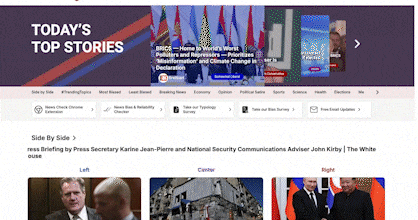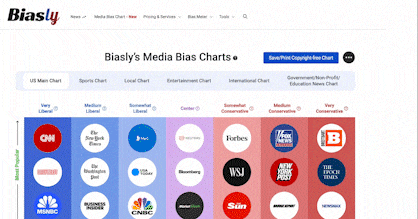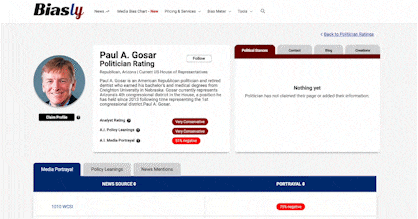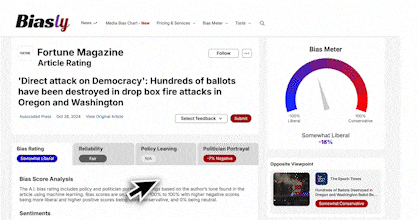U.S. House ushers in a tiny Republican majority to tackle enormous tasks in 2025
- Bias Rating
-28% Somewhat Liberal
- Reliability
40% ReliableFair
- Policy Leaning
10% Center
- Politician Portrayal
-56% Negative
Continue For Free
Create your free account to see the in-depth bias analytics and more.
Continue
Continue
By creating an account, you agree to our Terms and Privacy Policy, and subscribe to email updates. Already a member: Log inBias Score Analysis
The A.I. bias rating includes policy and politician portrayal leanings based on the author’s tone found in the article using machine learning. Bias scores are on a scale of -100% to 100% with higher negative scores being more liberal and higher positive scores being more conservative, and 0% being neutral.
Sentiments
4% Positive
- Conservative
| Sentence | Sentiment | Bias |
|---|---|---|
Unlock this feature by upgrading to the Pro plan. | ||
Reliability Score Analysis
Policy Leaning Analysis
Politician Portrayal Analysis
Bias Meter
Extremely
Liberal
Very
Liberal
Moderately
Liberal
Somewhat Liberal
Center
Somewhat Conservative
Moderately
Conservative
Very
Conservative
Extremely
Conservative
-100%
Liberal
100%
Conservative
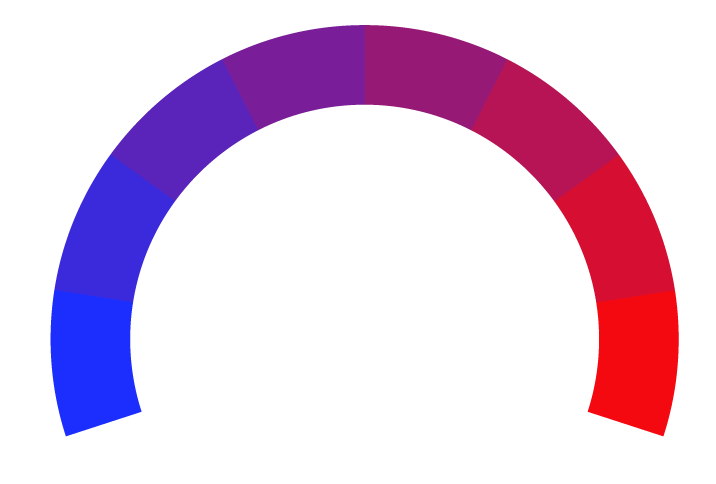
Contributing sentiments towards policy:
42% : Incoming Senate Majority Leader John Thune, R-S.D., is pushing for breaking it up into two bills in hopes of getting a quick victory on giving Trump more border security funding before bringing up another party-line measure later this year to extend Trump's tax cuts ahead of their expiration on the last day of 2025.32% : Last month's drawn-out fight over a short-term bill to prevent a government shutdown just punted the deadline to March 14, less than two months after Trump takes the oath of office.
26% : Johnson's majority is poised to shrink even further in the coming weeks, with Trump announcing he'll pluck two House Republicans to serve in his administration -- Michael Waltz of Florida to be national security adviser and Elise Stefanik of New York to be United Nations ambassador.
*Our bias meter rating uses data science including sentiment analysis, machine learning and our proprietary algorithm for determining biases in news articles. Bias scores are on a scale of -100% to 100% with higher negative scores being more liberal and higher positive scores being more conservative, and 0% being neutral. The rating is an independent analysis and is not affiliated nor sponsored by the news source or any other organization.






















 NBC News
NBC News